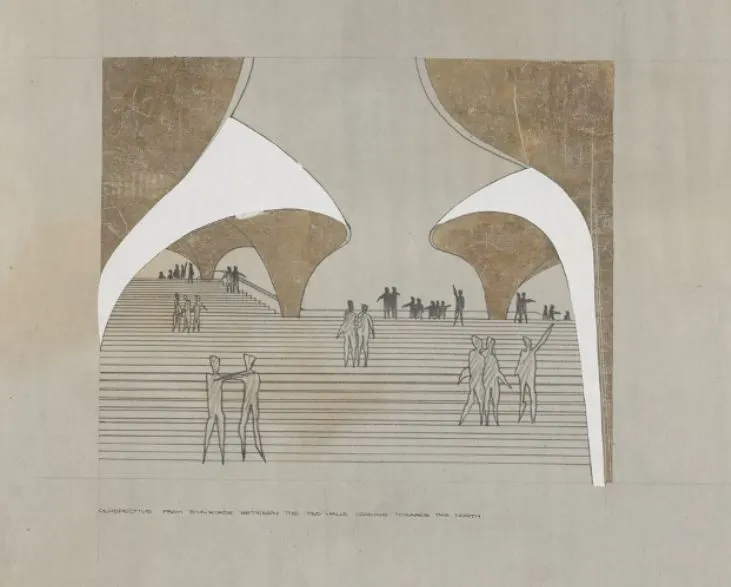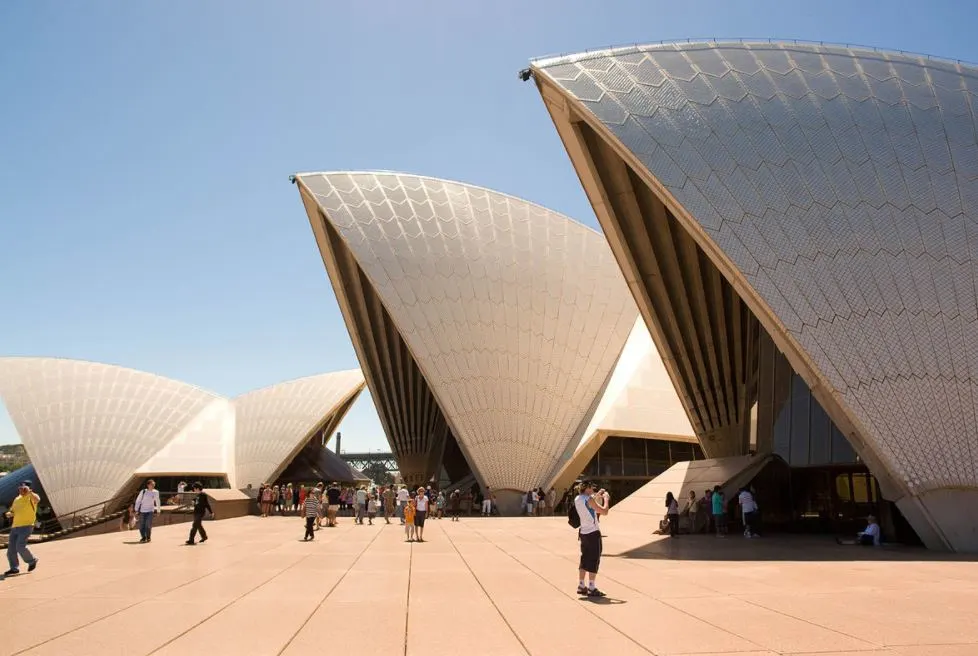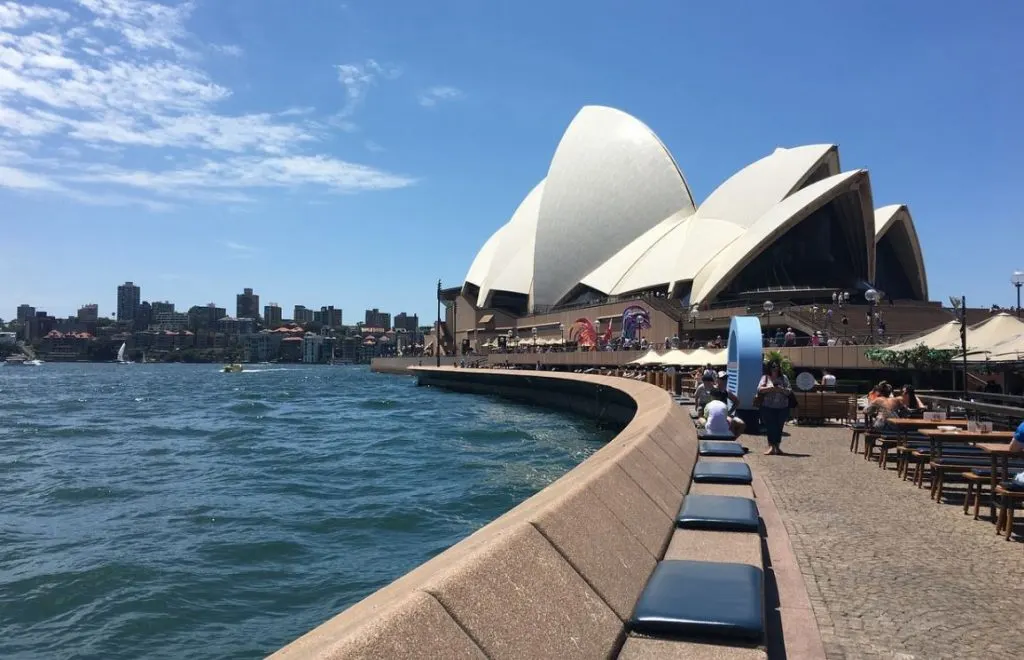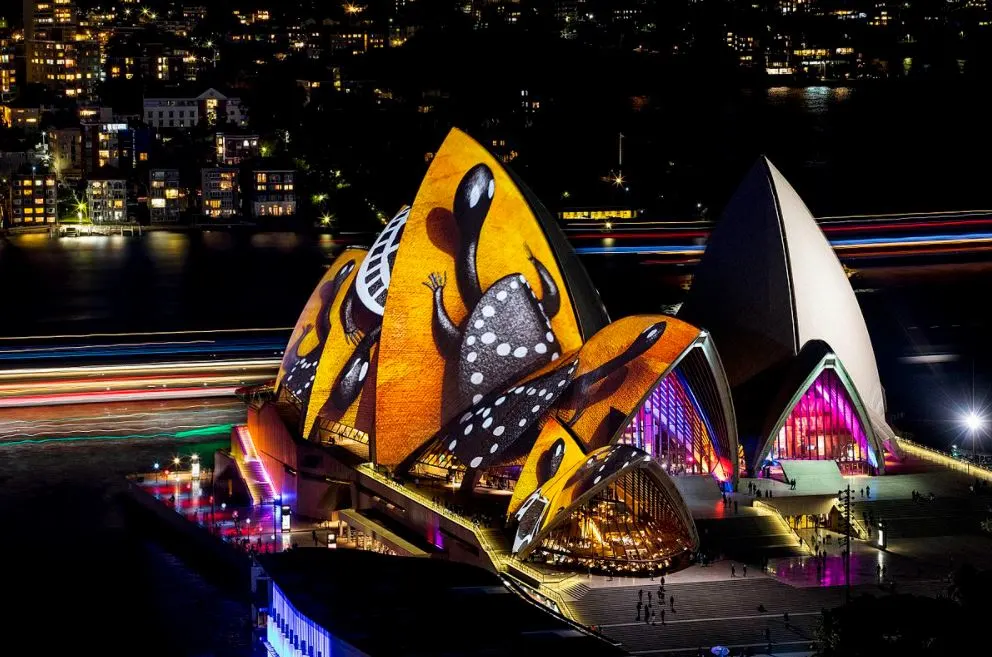If there’s one building in the world that defines a city, then it’s most certainly this astounding building in Sydney, Australia.
In this article, you can discover the ultimate list of fun and interesting facts about the Sydney Opera House, one of the most famous performance arts centers in the world!
1. The building was constructed on a former island
The Sydney Opera House is one of the most distinctive landmarks in Sydney, New South Wales, Australia. That’s not just because of its remarkable architecture, but also because of its fascinating location.
The building was constructed on Bennelong Point, a headland in the Sydney Harbour that was originally a tidal island, Bennelong Island, consisting of rocks and a small beast on its western side.
Today, this remarkable natural feature is occupied by the astounding opera house and is situated right across the central business district of Sydney, and right between Sydney Cove and Farm Cove.
It’s also close to the Botanical Gardens and the iconic Sydney Harbour Bridge, another distinctive landmark that you can often see together in pictures of the city.

2. The idea for the building came about in the late 1940s
The idea to build a venue for theatrical productions in the city came about when English conductor and composer lobbied for it. This man was named Sir Eugene Aynsley Goossens (1893-1962). He was also the Director of the NSW State Conservatorium of Music and therefore an influential man in Sydney.
The building that served as the venue for musical performances at the time was the Sydney Town Hall which had become much too small following World War II.
It wasn’t until the year 1954, however, that Goossens managed to gain support from the Premier of New South Wales named Joseph Cahill (1891-1959), and shortly after plans were made to build the structure.

3. An architectural design competition was held midway the 1950s

The first step Cahill took was to organize an architectural design competition to find a suitable design for the structure. This competition was launched on September 13, 1955, and 233 designs ended up being submitted.
The winner was relatively unknown Danish architect Jørn Utzon (1918-2008) who only completed the designs of buildings in Denmark and Sweden at the time. The judges were unanimous in their decision, though, as the building was bound to become the incredible landmark it eventually turned out to be.

4. The architect resigned but still received a prestigious award
Even though Utzon moved his office to Australia to supervise the project, tensions between the local government and Utzon gradually increased as the cost of the project increased.
When Minister for Public Works, Davis Hughes, a man with little interest in musical performances, openly criticized Utzon’s work, things reached a boiling point in 1965.
Even though just about all people around Utzon gave him the credit he deserved, Hughes continued to push his agenda of portraying Utzon as an “impractical dreamer,” something that eventually resulted in the architect’s resignation from the project.
In the 1990s, the organization managing the building, the Sydney Opera House Trust, restarted communication with the architect and he even became their new consultant. One of the exhibition spaces was opened in his honor called the “The Utzon Room“
Utzon also won the Pritzker Architecture Prize for his design in 2003, the highest possible honor an architect can receive!

5. It has a distinctive design and was built at a monumental scale
The building was designed in a modern expressionist architectural style and its main features are the concrete shells. These are composed of sections of a sphere with a radius of 75.2 meters (246 feet 8.6 inches) each.
All the architectural elements are set on top of a huge podium that covers an area of land with a width of 120 meters (394 feet) and a length of 183 meters (600 feet).
The maximum height of the precast concrete ribbed roof of the building is 65 meters (213 feet).

6. A historic building was demolished before construction started
Perhaps one of the most remarkable facts about the Sydney Opera House is that Bennelong Point was originally occupied by another building, namely the Fort Macquarie Tram Depot.
This historic building in Sydney was a major part of the Sydney tram network and opened its doors in 1902. It stood on the site of the original building here, the old Fort Macquarie which was completed in 1798.
This building eventually ended up being demolished in 1958 to make way for the Sydney Opera House.

7. The opera house was built in 3 phases over a period of 14 years
The construction of this enormous building was a massive endeavor and happened in 3 different phases:
- The first phase – Podium on which the structure was built.
- The second phase – Completion of the roof of the building.
- The third phase – Finalizing the interior of the building.
Utzon resigned in 1966 and by then, the third phase had already started. The building eventually ended up being completed in the year 1974, about 14 years after construction had started, even though the original estimate was for it to be completed in 1963.
The eventual cost of the building was a whopping $102 million. That’s quite a bit more than the estimated budget of the project which was just $7 million, don’t you think?
Well, the result is quite amazing as well, so “you get what you pay for” is a statement that makes sense in this case!

8. An Australian architect took over following Utzon’s resignation
The final 7 years of the project were completed by an Australian architect named Peter Hall (1931-1995). He made some changes to Utzon’s plans, the most prominent one being the redesign of the main concert hall.
This was supposed to be a multi-purpose hall that was suited for both opera performances and concerts but it ended up solely being used as a concert hall.
Regardless of the changes, Utzon is ultimately credited with the design of the building, even though Peter Hall supervised the final phase of the project.

9. The building was inaugurated by a special guest
The anticipation of the opening of this magnificent new landmark in Sydney had been brewing for a couple of years in the early 1970s, so it’s obvious that this was a major event.
It became even more prestigious when it turned out that Queen Elizabeth II, Queen of Australia, opened the building on October 20, 1973, an event witnessed by thousands of people.
The event was also witnessed by millions of people around the world on television, and the day ended with fireworks and a performance of Beethoven’s Symphony No. 9.

10. 6 venues host over 1,500 annual performances
Over 1.2 million people visit the opera house every year to watch a total of over 1,500 performances. These take place in one of the 6 performance venues inside the building. These venues are:
- Main Concert Hall – 2,679 seats and the home of the Sydney Symphony Orchestra.
- Joan Sutherland Theatre – 1,507 seats and the Sydney home of Opera Australia and The Australian Ballet.
- Drama Theatre – 544 seats and mainly used by the Sydney Theatre Company.
- Playhouse – Regular theater with 398 seats.
- Studio – Multi-purpose room with 298 permanent seats.
- Utzon Room – Small multi-purpose room built in honor of the late architect.
Apart from the indoor rooms, the building’s forecourt can also be used for performances and is often packed with visitors enjoying a nice concert!

11. It’s one of the most popular tourist attractions in Australia
The attraction of the building is much more than the people enjoying performances here. The building itself is visited by an estimated 8 million people every year, making it one of the most popular tourist attractions in Australia!
There’s also a guided tour for people who want to explore the entire structure and an estimated 350,000 people enjoy exploring this magnificent structure every year as well.

12. This UNESCO site looks astounding during Vivid Sydney
If we can recommend one time of the year to visit Sydney, and more specifically the Sydney Opera House, then it’s during a festival referred to as “Vivid Sydney.”
The entire Sydney is transformed into an enormous light spectacle and there are performances of artists everywhere. It takes place every year over the course of 3 weeks in May and June.
During this event, the opera house and various other landmarks in Sydney are transformed into a work of art, an astounding sight to behold, that’s for sure!

